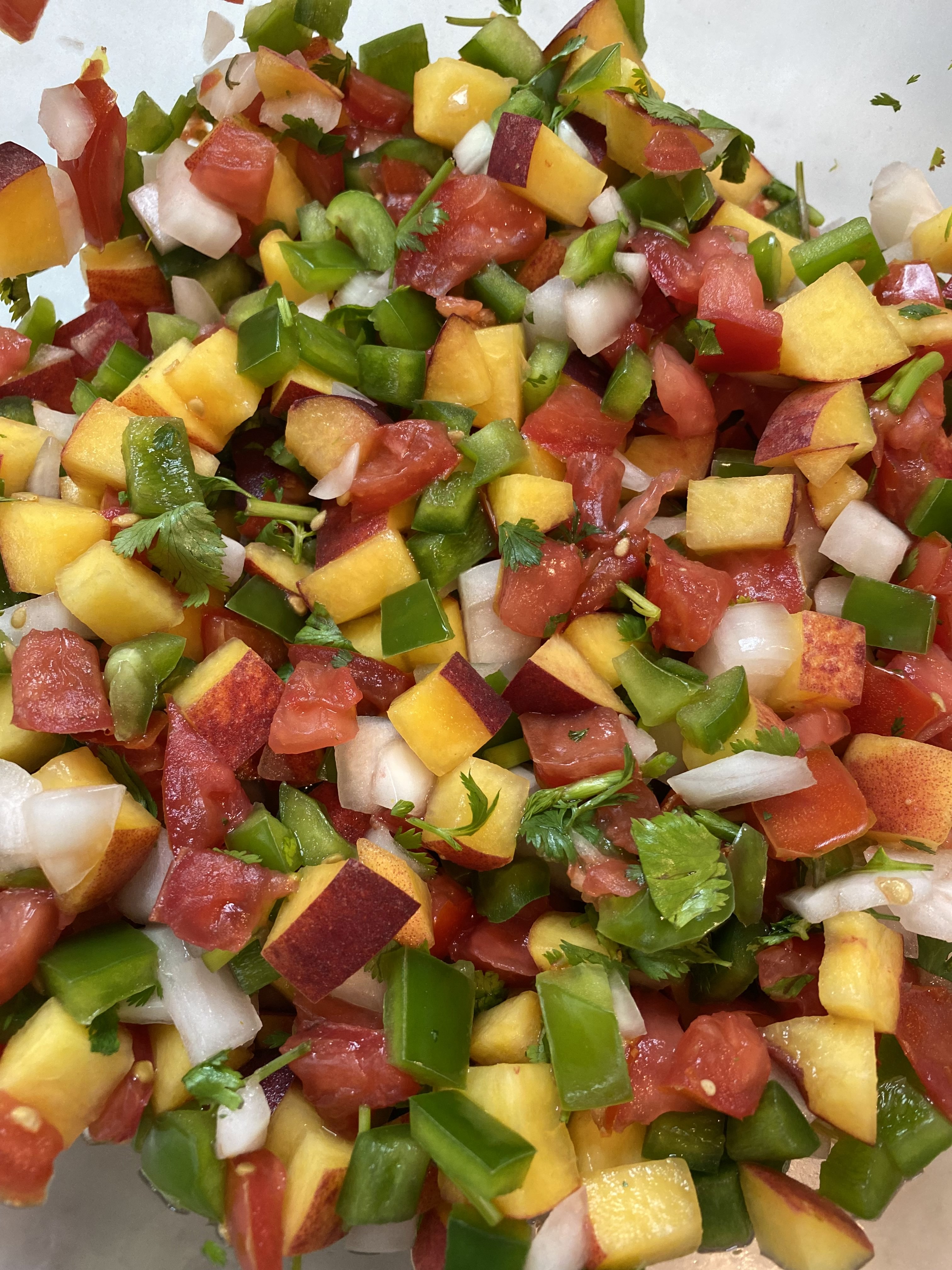Salsa Recipe for Pizzazz
go.ncsu.edu/readext?804024
en Español / em Português
El inglés es el idioma de control de esta página. En la medida en que haya algún conflicto entre la traducción al inglés y la traducción, el inglés prevalece.
Al hacer clic en el enlace de traducción se activa un servicio de traducción gratuito para convertir la página al español. Al igual que con cualquier traducción por Internet, la conversión no es sensible al contexto y puede que no traduzca el texto en su significado original. NC State Extension no garantiza la exactitud del texto traducido. Por favor, tenga en cuenta que algunas aplicaciones y/o servicios pueden no funcionar como se espera cuando se traducen.
Português
Inglês é o idioma de controle desta página. Na medida que haja algum conflito entre o texto original em Inglês e a tradução, o Inglês prevalece.
Ao clicar no link de tradução, um serviço gratuito de tradução será ativado para converter a página para o Português. Como em qualquer tradução pela internet, a conversão não é sensivel ao contexto e pode não ocorrer a tradução para o significado orginal. O serviço de Extensão da Carolina do Norte (NC State Extension) não garante a exatidão do texto traduzido. Por favor, observe que algumas funções ou serviços podem não funcionar como esperado após a tradução.
English
English is the controlling language of this page. To the extent there is any conflict between the English text and the translation, English controls.
Clicking on the translation link activates a free translation service to convert the page to Spanish. As with any Internet translation, the conversion is not context-sensitive and may not translate the text to its original meaning. NC State Extension does not guarantee the accuracy of the translated text. Please note that some applications and/or services may not function as expected when translated.
Collapse ▲When eating out, I frequently order seafood tacos. I like the variety of seafood that’s often available as well as the fact that they tend to be smaller and lower in calories than larger seafood sandwiches. They also often have added fruits and vegetables. I recently got some grilled shrimp tacos at a restaurant (not here in Brunswick County) that seemed to be lacking. They had shrimp, lettuce, and a little cheese but needed a little more pizzazz.
When I saw the recipe of the month in the June issue of The Brunswick Buzz I knew this homemade peach salsa would have been just what those bland tacos needed. I think it would also be great on chicken, fish, or pork tacos. Use this salsa recipe as a template for making other salsas. Don’t like cilantro? Try dill or parsley. Jalapenos just too hot for you? Leave them out or add a red or yellow pepper for more color. Make it your own invention by experimenting with other fruits or herbs. Salsa is a great alternative to higher fat sauces and dressings.
Sweet Summer Peach Salsa
Ingredients
- 1 ½ pounds of tomatoes, diced (about 4)
- 2 bell peppers, seeded and diced
- 2 jalapenos, seeded and finely diced
- 1 medium sweet or yellow onion, diced
- 1 pound of peaches, pitted and diced (about 4 small)
- ½ bunch of cilantro, minced
- 2 Tablespoons of lime juice (juice of one lime)
- ¼ teaspoon black pepper
Directions
- Begin with clean hands and kitchen counter. Wash all fruit and vegetables in cold running water before chopping. Peeling the fruit is optional.
- When chopping the fruit and vegetables, try to make cuts roughly the same size. The salsa will be easier to eat and look nice, too.
- Combine peaches, tomato, peppers, onion, and cilantro in large glass or ceramic bowl. Add cilantro, lime juice and pepper. Toss gently to mix.
- Cover and refrigerate until ready to serve. Chilling for one to two hours will let the flavors develop. This salsa is usually best eaten the day it’s made.
- Preparing it the day before may result in less vibrant colors and crispness. Refrigerate leftovers within two hours. Use leftovers within one to two days due to decline in quality but will still be safe to eat within four days.
The main ingredient in the recipe is peaches and they are in the local food spotlight in this month’s newsletter. The peach season in North Carolina runs four months—starting in June and peaking in July. North Carolina is the seventh top producer of peaches in the United States.
Here are a few additional tips about peaches from our Extension Master Food Volunteers:
- When selecting peaches at a local market, select those that are firm but yield to a gentle pressure. Avoid any that are blemished.
- Peaches will continue to ripen a bit after picking. Unripe peaches should be stored in a paper bag at room temperature until they are ready to eat. Once ripe, they should be put into the refrigerator crisper, where they will keep for about one week. Stored too long in the refrigerator, peaches tend to dehydrate (wrinkle).
- Peach skins can be fuzzy or smooth and both are edible. Peaches can have white, orange, or even red skins and/or flesh. Sweetness of the flesh varies.
- There are freestone or cling peaches. This refers to their pits. Freestone peaches release “freely” from their pits; cling peaches don’t.
Recipe courtesy of the N.C. Cooperative Extension-Local Food Program. To see the step-by-step instructions for this recipe go to our website or YouTube channel.
Cheryle Syracuse wrote this article and more similar ones for the Family and Consumer Sciences Column in the Brunswick Beacon. Syracuse is an FCS team member and can be reached at N.C. Cooperative Extension, Brunswick County Center, 910-253-2610.




